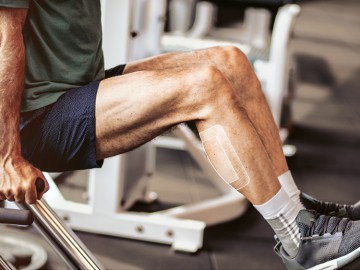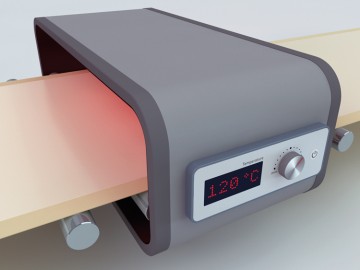Medical Silicone Adhesives

SILPURAN® silicone skin adhesives allow atraumatic removal and offer optimal properties for wound healing. The product range includes light to very strong adhesive silicone gels and is not only perfect for wound and scar care, but for all applications requiring a secure bond, optimal patient comfort and gentle removal. Even wearable medical devices can be safely attached to the skin with SILPURAN® silicone adhesives.
Applications:
Wound Care
- Absorbent foam dressings
- Wound dressing for chronic, open wounds
- Adhesive plasters
- Island dressings for ulcers
- Post-operative wound dressings
- Wound contact dressing for negative pressure wound therapy (NPWT)
- Over-the-counter (OTC) adhesive plasters, dressings and tapes for sensitive skin
- Smart dressings (electronic adhesive plasters, smart bandages, wound monitoring)
Fixation
- Medical adhesive tapes
- Fixation of sensors
- Fixation of medical devices / wearables
Skin-friendly ostomy care
- Attaching the ostomy bag to the skin
- Sealing the stoma
Transdermal patches
Benefits:
- Atraumatic removal, gentle dressing change
- Optimal healing environment thanks to water-vapor and gas permeability
- Biocompatibility (e.g. USP class VI, ISO 10993)
- Silicones do not support microbial growth (hydrophobic)
- Durability: low surface tension, thermal stability and chemical stability
- Good resistance to a large number of solvents and chemicals
- Sterilizable for single and repeated use (ethylene oxide)
- Good weathering, UV and aging resistance
- Highly transparent
Conventional skin adhesives can cause high shear stress resulting in the removal of the upper cell layer, causing patients to expect or actually experience pain. WACKER SILPURAN® silicone gel adhesives exhibit low shear stress, enabling them to provide a secure hold while keeping the upper skin layers intact during removal.
- Silicones are suitable for the fixation of all devices that need to be attached to the body: insulin pumps, EEG sensors, location sensors for dementia patients – even wearables can be fixed with soft silicone adhesives. WACKER SILPURAN® silicone gels offer a broad spectrum of adhesion strengths and properties. Products like SILPURAN® 2114 match the adhesive strength properties of certain acrylic adhesives.
- Find out how the ostomy care expert Trio Healthcare uses SILPURAN® silicone adhesive to attach ostomy systems and improve patients’ quality of life by avoiding the acute skin irritations so common with conventional commercially available products.
WACKER SILPURAN® skin adhesives may not achieve the same adhesive strength as aggressive acrylic adhesives, but wear times can be impressively long compared to commercially available “sensitive” acrylic systems, depending on individual conditions and the type of dressing. Wear time can be prolonged by selecting a strong silicone adhesive like SILPURAN® 2114 or SILPURAN® 2122.
SILPURAN® silicone gels exhibit consistent adhesion properties with overall high adhesion strength, even when they are removed for the second time. This means they can be repositioned without losing any adhesive strength.
A number of factors must be taken into account when it comes to pairing adhesives and release liners.
- Material compatibility between the adhesive and release liner is important, as both can have a significant impact on product performance.
- It should be possible to peel off the release liner without removing the adhesive.
- The release force should not exceed two and a half times the initial force after nine weeks at room temperature.
- The release force should not exceed 0.5 N/in.
There are several established release liner solutions for soft silicone adhesives with low surface adhesion that meet these requirements.
But silicone gels with strong adhesive strength can be a challenge. WACKER carried out an extensive test program to identify the release liners that are easiest to use and harmonize well with the SILPURAN® gels with greater adhesive strength. You’ll find the results in the study conducted with LOPAREX.
- Typically, there is virtually no loss during the silicone gel coating process when the material is transferred to the carrier. This can save money compared to the coating process for acrylic adhesives, where volume losses during production are not uncommon.
- Our gels with greater adhesion strength such as SILPURAN® 2114 achieve the same adhesive properties with a lower coating weight.
Yes, wearables attached with SILPURAN® silicone adhesives be cleaned and reused. For easy-to-handle products, we recommend separating the fixation element from the medical device in the product design. This makes it very easy to clean the product and replace the adhesive elements.
One possible mode of action indicated by several studies is the following: Due to their hydrophobic nature, silicone gel scar sheets improve hydration of the wound bed by retaining optimum water levels in the epidermis. This prevents the production of excess collagen (reduced activity of cytokines and fibroblasts). Thus, silicone gel sheets limit the formation of hypertrophic and keloid scars and support the formation of normal skin. Silicone gel sheets can also be removed atraumatically from the skin. This prevents further damage from being done to the wound or scar area by skin cell stripping. SILPURAN soft skin adhesive gels are the materials of choice for silicone scar sheets.
Silicone scar sheets are an established therapy for limiting the formation of hypertrophic and keloid scars after surgical procedures requiring large incisions, such as Caesarian sections, mastectomies or plastic surgery. Other therapy options are rehabilitation of burns and old injury scars. Cosmetic scars, such as acne scars or scarring caused by tattooing / tattoo removal, may also benefit from silicone scar sheets. Silicone gels from the SILPURAN skin adhesive range serve as the base material here.







